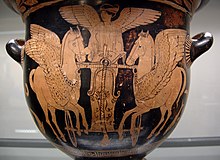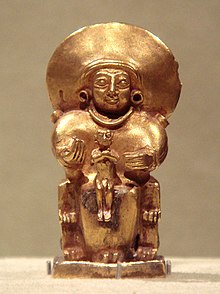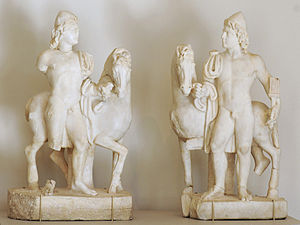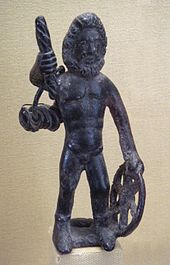HISTORY LESSON :-
As a student, history always managed to bore me. Always blah blah blah ...
Usually, history is not my forte nor my usually picked topic. But, this one eventually caught my attention.
Usually, history is not my forte nor my usually picked topic. But, this one eventually caught my attention.
THE ORIGIN OF MOST OF THE INDO-EUROPEAN CULTURES:-
As referred to as PROTO-INDO-EUROPEAN (PIE) religion by modern archeologists and historians, this if considered to be the most accurate explanation of the birth of Vedic culture and the Western ones and their similarity and parallelism still astounds me.
Proto-Indo-European religion is the belief system adhered to by the Proto-Indo-Europeans. Although this belief system is not directly attested, it has been reconstructed by scholars of comparative mythology based on the similarities in the belief systems of various Indo-European peoples.
Various schools of thought exist regarding the precise nature of Proto-Indo-European religion, which do not always agree with each other. Vedic mythology, Roman mythology, and Norse mythology are the main mythologies normally used for comparative reconstruction, though they are often supplemented with supporting evidence from the Baltic, Celtic, Greek, Slavic, and Hittitetraditions as well.
Well-attested myths of the Proto-Indo-Europeans include a myth involving a storm god who slays a multi-headed serpent that dwells in water, a myth about the Sun and Moon riding in chariots across the sky, and a creation story involving two brothers, one of whom is sacrificed by the other in order to create the world. The Proto-Indo-Europeans may have believed that the Otherworld was guarded by some kind of watchdog and could only be reached by crossing a river. They also may have believed in some kind of world tree, bearing fruit of immortality, either guarded by or gnawed on by a serpent or dragon of some kind and tended to by three goddesses, who were believed to spin the thread of life.
PANTHEON :-
A pantheon is a group of God's of a particular culture or religion.
Linguists are able to reconstruct the names of some deities in the Proto-Indo-European language (PIE) from many types of sources. Some of the proposed deity names are more readily accepted among scholars than others.
The term for "a god" was *deiwos, reflected in Hittite, sius; Latin, deus, divus; Sanskrit, deva; Avestan, daeva (later, Persian, div); Welsh, duw; Irish, dia; Old Norse, tívurr; Lithuanian, Dievas; Latvian, Dievs.
Heavenly deities
Sky Father
The supreme ruler of the Proto-Indo-European pantheon was the god *Dyḗus Pḥatḗr, whose name literally means "Sky Father". He is believed to have been worshipped as the god of the daylit skies. He is, by far, the most well-attested of all the Proto-Indo-European deities. The Greek god Zeus, the Roman god Jupiter, and the Illyrian god Dei-Pátrous all appear as the head gods of their respective pantheons. The Norse god Týr, however, seems to have been demoted to the role of a minor war-deity during the time prior to the earliest Germanic texts. *Dyḗus Pḥatḗr is also attested in the Rigveda as Dyáus Pitā, a minor ancestor figure mentioned in only a few hymns. The names of the Latvian god Dievsand the Hittite god Attas Isanus do not preserve the exact literal translation of the name *Dyḗus Pḥatḗr, but do preserve the general meaning of it.
*Dyḗus Pḥatḗr may have had a consort who was an earth goddess. This possibility is attested in the Vedic pairing of Dyáus Pitā and Prithvi Mater, the Roman pairing of Jupiter and Tellus Mater from Macrobius's Saturnalia, and the Norse pairing of Odinand Jörð. Odin is not a reflex of *Dyḗus Pḥatḗr, but his cult may have subsumed aspects of an earlier chief deity who was. This pairing may also be further attested in an Old English ploughing prayer and in the Greek pairings of Ouranos and Gaia and Zeus and Demeter.
Dawn Goddess

Eos in her chariot flying over the sea, red-figure krater from South Italy, 430–420 BC, Staatliche Antikensammlungen
*Haéusōs has been reconstructed as the Proto-Indo-European goddess of the dawn. Derivatives of her found throughout various Indo-European mythologies include the Greek goddess Eos, the Roman goddess Aurōra, the Vedic goddess Uṣás, and the Lithuanian goddess Auštrine. The form Arap Ushasappears in Albanian folklore, but as a name for the Moon, not the dawn. An extension of the name may have been *H2eust(e)ro-, since the form *as-t-r with an intrusive -t- between s and r occurs in some northern dialects.
Examples of such forms include the Anatolian Estan, Istanus, and Istara, the Greek Hestia, goddess of the hearth, the Latin Vesta, also a hearth goddess, the Armenian Astghik, a star goddess, the Baltic goddess Austija, and possibly also the Germanic Ēostre or *Ostara, a goddess associated with a springtime festival who is mentioned only once by Bedein his treatise The Reckoning of Time.
Sun and Moon

Possible depiction of the Hittite Sun goddess holding a child in her arms from between 1400 and 1200 BC
*Seh2ul and *Meh1not are reconstructed as the Proto-Indo-European goddess of the Sun and god of the Moon respectively. *Seh2ul is reconstructed based on the Greek god Helios, the Roman god Sol, the Celtic goddess Sul/Suil, the Norse goddess Sól, the Germanic goddess *Sowilō, the Celtic Sul, the Hittite goddess "UTU-liya", and the Vedic god Surya.
*Meh1not- is reconstructed based on the Norse god Máni, the Slavic god Myesyats, and the Lithuanian god *Meno, or Mėnuo (Mėnulis). They are often seen as the twin children of various deities, but in fact the sun and moon were deified several times and are often found in competing forms within the same language.
The usual scheme is that one of these celestial deities is male and the other female, though the exact gender of the Sun or Moontends to vary among subsequent Indo-European mythologies. The original Indo-European solar deity appears to have been female, a characteristic not only supported by the higher number of sun goddesses in subsequent derivations (feminine Sól, Saule, Sulis, Solntse—not directly attested as a goddess, but feminine in gender — Étaín, Grían, Aimend, Áine, and Catha versus masculine Helios, Surya, Savitr, Usil, and Sol) (Hvare-khshaeta is of neutral gender), but also by vestiges in mythologies with male solar deities (Usil in Etruscan art is depicted occasionally as a goddess, while solar characteristics in Athena and Helen of Troystill remain in Greek mythology). The original Indo-European lunar deity appears to have been masculine, with feminine lunar deities like Selene, Minerva, and Luna being a development exclusive to the eastern Mediterranean. Even in these traditions, remnants of male lunar deities, like Menelaus, remain.[31]
Although the sun was personified as an independent, female deity, the Proto-Indo-Europeans also visualized the sun as the eye of *Dyḗus Pḥatḗr, as seen in various reflexes: Helios as the eye of Zeus, Hvare-khshaeta as the eye of Ahura Mazda, and the sun as "God's eye" in Romanian folklore. The names of Celtic sun goddesses like Sulisand Grian may also allude to this association; the words for "eye" and "sun" are switched in these languages, hence the name of the goddesses.
Divine Twins
Horse Twins

Pair of Roman statuettes from the third century AD depicting the Dioscuri as horsemen, with their characteristic skullcaps (Metropolitan Museum of Art)
The Horse Twins are a set of twin brothers found throughout nearly every Indo-European pantheon who usually have a name that means 'horse' *ekwa-, but the names are not always cognate and no Proto-Indo-European name for them can be reconstructed. In most Indo-European pantheons, the Horse Twins are brothers of the Sun Maiden or Dawn goddess, and sons of the sky god.
They are reconstructed based on the Vedic Ashvins, the Lithuanian Ašvieniai, the Latvian Dieva deli, the Greek Dioskouroi (Kastor and Polydeukes), the Roman Dioscuri (Castor and Pollux), the Irish twins of Macha, the Old English Hengist and Horsa (whose names mean "stallion" and "horse"), the Slavic Lel and Polel (possibly Christianized in Albanian as saints Flori and Lori) and possibly Old Norse Sleipnir, the eight-legged horse born of Loki. The horse twins may have been based on the morning and evening star (the planet Venus) and they often have stories about them in which they "accompany" the Sun goddess, because of the close orbit of the planet Venus to the sun.[38]
Twin Founders
The Proto-Indo-European Creation myth seems to have involved two key figures: *Manu- ("Man"; Indic Manu; Germanic Mannus) and *Yemo- ("Twin"; Indic Yama; Germanic Ymir), his twin brother. Reflexes of these two figures usually fulfill the respective roles of founder of the human race and first human to die.
Storm deities

Ancient Celtic statue of the storm-god Taranis, clutching a wheel and thunderbolt, from Le Chatelet, Gourzon, Haute-Marne, France
*Perkwunos has been reconstructed as the Proto-Indo-European god of lightning and storms. His name literally means "The Striker." He is reconstructed based on the Norse goddess Fjǫrgyn (the mother of Thor), the Lithuanian god Perkūnas, and the Slavic god Perúnú. The Vedic god Parjánya may also be related, but his possible connection to *Perkwunos is still under dispute.[41] The name of *Perkwunos may also be attested in Greek as κεραυνός (Keraunós), an epithet of the god Zeus meaning "thunder-shaker."
Water deities
Some authors have proposed *Neptonos or *H2epom Nepōts as the Proto-Indo-European god of the waters. The name literally means "Grandson [or Nephew] of the Waters." He has been reconstructed based on the Vedic god Apám Nápát, the Roman god Neptūnus, and the Old Irish god Nechtain. Although such a god has been solidly reconstructed in Proto-Indo-Iranian religion, Mallory and Adams nonetheless still reject him as a Proto-Indo-European deity on linguistic grounds.
A river goddess *Dehanu- has been proposed based on the Vedic goddess Dānu, the Irish goddess Danu, the Welsh goddess Don and the names of the rivers Danube, Don, Dnieper, and Dniester. Mallory and Adams, however, dismiss this reconstruction, commenting that it does not have any evidence to support it.
Some have also proposed the reconstruction of a sea god named *Trihatōn based on the Greek god Triton and the Old Irish word trïath, meaning "sea." Mallory and Adams reject this reconstruction as having no basis, asserting that the "lexical correspondence is only just possible and with no evidence of a cognate sea god in Irish."
Nature deities
Detail from the Gundestrup cauldron from Gundestrup, Denmark, thought to date between 150 BC and 1 AD, showing the Celtic god Cernunnos with horns, sitting in a meditative position, surrounded by animals
The Pashupati seal from Mohenjo-daro in northern India, dated to between 2350 and 2000 BC, showing a horned, tricephelic deity in a meditative position, surrounded by animals
*Péh2usōn, a pastoral deity, is reconstructed based on the Greek god Pan and the Vedic god Pūshān. Both deities are closely affiliated with goats and were worshipped as pastoral deities. The minor discrepancies between the two deities can be easily explained by the possibility that many attributes originally associated with Pan may have been transferred over to his father Hermes. The association between Pan and Pūshān was first identified in 1924 by the German scholar Hermann Collitz.
In 1855, Adalbert Kuhn suggested that the Proto-Indo-Europeans may have believed in a set of helper deities, whom he reconstructed based on the Germanic elves and the Hindu rhibus. Though this proposal is often mentioned in academic writings, very few scholars actually accept it. There may also have been a female cognate akin to the Greco-Roman nymphs, Slavic vilas, the Huldraof Germanic folklore, and the HinduApsaras.
SUN :-
Relatedto the dragon-slaying myth is the "Sun in the rock" myth, in which the Sun is imprisoned within a rock, but is set free by a heroic warrior deity, who splits open the rock, allowing her to escape. In the Rigveda, the goddess Ushas and a herd of cows are freed from imprisonment after the god Indra slays the multi-headed serpent Vritra. A comparable myth in the Greek tradition is the myth of Aphrodite rising from the foam of the sea following Ouranos's castration by Kronos.
CONCEPT OF SACREDNESS :-
Émile Benveniste states that "there is no common [IE] term to designate religion itself, or cult, or the priest, not even one of the personal gods". There are, however, terms denoting ritual practice reconstructed in Indo-Iranian religion which have root cognates in other branches, hinting at common PIE concepts. Thus, the stem *hrta-, usually translated as "[cosmic] order" (Vedic ṛta and Iranian arta). Benveniste states, "We have here one of the cardinal notions of the legal world of the Indo-Europeans, to say nothing of their religious and moral ideas" (pp. 379–381). He also adds that an abstract suffix -tu formed the Vedic stem ṛtu-, Avestan ratu-which designated order, particularly in the seasons and periods of time. The same root and suffix, but a different formation, appears in Latin rītus "rite".
Benveniste also posits the existence of a dual conception of sacredness, divided into a positive side, the intrinsic, otherworldly power of deities; and a negative side, sacredness of objects in the world that make them taboo for humans. This opposition is found in word pairs such as the Latin sacer/sanctus and Greek ἅγιος/ἱερός. ---------------------------------------------------------------------------------------. I found these information so interesting that I thought it was worth sharing. The parallelism between the ancient glorious Vedic and Western religions and philosophies.
Hope all of you enjoyed it.
आ नो भद्राः क्रतवो यन्तु विश्वतः
May all goodness of the universe befall upon us all.
May There be peace everywhere.



Comments
Post a Comment